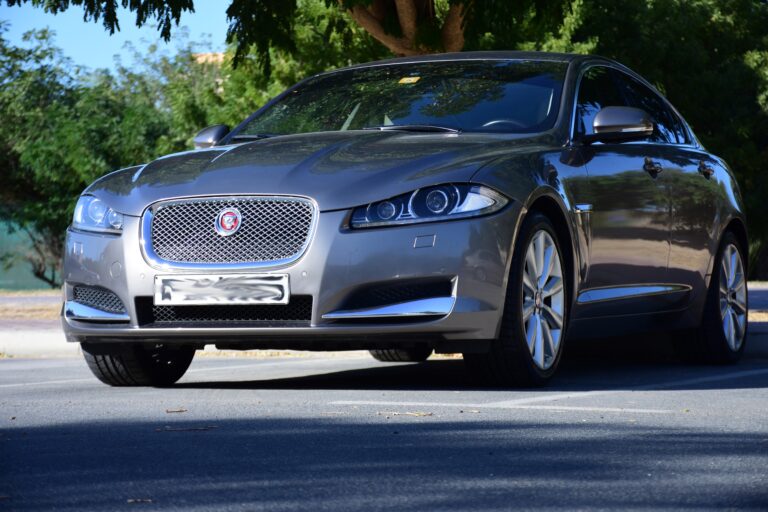Brand New Car Is Noisy: Unraveling the Unexpected Symphony
Brand New Car Is Noisy: Unraveling the Unexpected Symphony cars.truckstrend.com
The intoxicating scent of a new car, the pristine paintwork, the untouched interior – these are the hallmarks of a fresh start on the road. For many, purchasing a brand new vehicle is a dream come true, a significant investment in reliability, comfort, and the promise of trouble-free motoring. So, imagine the surprise, and often frustration, when that dream car begins to emit an unexpected chorus of squeaks, rattles, hums, or even clunks. "Brand new car is noisy" is a phrase that can deflate the excitement quicker than a flat tire, leading owners to question the quality of their purchase and the integrity of the manufacturer.
But is a noisy new car always a sign of a defect? Not necessarily. While some noises indeed indicate underlying issues that warrant immediate attention, others are simply part of the vehicle’s "break-in" period, the result of new components settling, or even characteristics inherent to the car’s design. This comprehensive guide will delve into the multifaceted world of new car noises, helping you distinguish between normal operating sounds and potential problems, providing actionable advice on what to do, and equipping you with the knowledge to navigate this often bewildering experience.
Brand New Car Is Noisy: Unraveling the Unexpected Symphony
Understanding "Noisy" in a New Car Context
The perception of "noisy" is highly subjective. What one person considers a minor hum, another might find grating. In the context of a new vehicle, the expectation is often near-silent operation, a testament to modern engineering and manufacturing precision. However, achieving absolute silence is virtually impossible. Every car, regardless of its price point, generates a degree of Noise, Vibration, and Harshness (NVH). Manufacturers spend millions on NVH engineering to minimize these disturbances, but trade-offs exist between performance, weight, fuel efficiency, and cost.
For a new car owner, the challenge lies in differentiating between:
- Normal Operational Sounds: These are the expected sounds of a complex mechanical system working as designed. They might be more pronounced in a new car as components settle or "bed in."
- Characteristic Sounds: Some vehicles, due to their design, type of tires, engine configuration, or even specific features, inherently produce certain sounds that are not indicative of a fault. For instance, a high-performance sports car might have a louder exhaust note, or a vehicle with off-road tires might generate more road noise.
- Concerning Sounds: These are noises that signal a potential mechanical issue, a loose component, or a defect that needs professional diagnosis and repair.

Understanding this distinction is the first step in addressing your new car’s unexpected symphony.
Common Sources of Noise in Brand New Cars
New cars can produce a variety of sounds from different systems. Pinpointing the source is crucial for effective diagnosis.
Engine and Powertrain Related Noises
- Engine Break-in Sounds: A new engine’s components (pistons, rings, valves, bearings) are incredibly tight. As they wear in, you might hear faint ticking (tappets), slight hums, or even a different exhaust note for the first few hundred miles. These often diminish over time.
- Fuel Pump Whine: Some fuel pumps, especially when new or when the fuel tank is low, can emit a faint whine that is audible, particularly at idle or low speeds.
- Transmission Noises: New transmissions might produce a slight whine or hum as gears and bearings settle. This is usually more noticeable under specific load conditions or speeds.
- Exhaust System Resonance: New exhaust systems, particularly those with thicker gauge steel or performance designs, can have a distinct resonance or hum until carbon builds up and muffles the sound slightly.


Brake Related Noises
- New Brake Pad Squeal (Bedding In): It’s very common for new brake pads and rotors to squeal or make a slight grinding sound during the first few hundred miles as the pad material transfers to the rotor surface and the components "bed in." This should subside.
- Pad Shims/Hardware: Sometimes, the anti-rattle shims or other brake hardware might not be perfectly seated, leading to slight squeaks or rattles, especially over bumps.
Suspension and Chassis Related Noises
- New Shock/Strut Sounds: Suspension components, when brand new, can sometimes produce slight creaks or groans as their bushings and internal components settle. This is usually minor and temporary.
- Bushings: Rubber or polyurethane bushings in the suspension and steering can be stiff when new, leading to slight squeaks or creaks, especially in cold weather or over speed bumps.
- Steering Components: A faint whine from the power steering pump (if hydraulic) or a slight hum from the electric power steering motor can sometimes be heard.
Tire Related Noises
- Tread Pattern Noise: The design of tire treads significantly impacts road noise. Aggressive or all-terrain tires will inherently be louder than touring or comfort-oriented tires. Even new, quiet tires can have a slight hum until they wear slightly.
- Tire Pressure: Over-inflated tires can increase road noise and harshness. Always check and maintain recommended tire pressure.
- Flat Spotting: If a new car has been sitting for a long time before delivery, tires can develop temporary flat spots, causing a thumping sound that typically disappears after a few miles of driving.
Aerodynamic and Wind Noises
- Door and Window Seals: New rubber seals around doors and windows can sometimes be stiff or not perfectly seated, leading to minor wind noise, especially at highway speeds. They often conform better over time.
- Exterior Accessories: Roof racks, antennae, or even certain mirror designs can contribute to wind noise.
Interior Rattles and Squeaks
- Loose Trim Pieces: Plastic trim panels in the dashboard, doors, center console, or headliner can sometimes be slightly loose from the factory, leading to rattles over bumps.
- Wiring Harnesses: Unsecured wiring harnesses behind the dashboard or under seats can tap against other components.
- Manufacturing Debris: Occasionally, a small piece of forgotten debris (a screw, plastic shard) can be trapped within a panel, causing a rattle.
- Items in Storage: Make sure items in your glove box, center console, or trunk aren’t rattling. Even an empty cupholder can sometimes be the culprit.
Distinguishing Between Normal and Concerning Noises
While some new car noises are benign, others are red flags. Knowing the difference is key to knowing when to act.
Normal (Often Temporary) Noises:
- Faint, consistent hum/whine from engine/transmission at specific speeds: Often part of the break-in.
- Occasional, light squeal from brakes during the first few hundred miles: Brake pad bedding.
- Slight ticking/tapping from the engine on cold start that quickly fades: Valve lifter noise, common with new oil/components.
- Minor creaks from suspension over bumps when new: Bushings settling.
- Consistent, low-frequency hum from tires, especially on certain road surfaces: Tire design characteristic.
- Slight wind noise at highway speeds: Can be normal for certain vehicle designs or if seals are still settling.
Concerning (Requires Attention) Noises:
- Loud, persistent squealing from brakes: Could indicate a caliper issue, worn pads (unlikely in a new car unless defective), or a foreign object.
- Grinding, clunking, banging sounds: Especially from wheels, suspension, or transmission. These are serious and indicate component failure or severe looseness.
- Loud, consistent hum or whine that increases with speed: Could be a wheel bearing, differential, or transmission issue.
- Loud clicking or popping when turning: Often indicative of a CV joint issue.
- Persistent, loud squealing from under the hood: Could be a loose or failing belt.
- Deep knocking or rhythmic tapping from the engine that gets louder: Potential internal engine problem.
- Any noise accompanied by a warning light, loss of performance, or unusual vibrations.
- Rattles or squeaks that are constant, very loud, or worsen significantly over a short period.
What to Do When Your Brand New Car is Noisy (Practical Advice)
If your new car is noisy, don’t panic, but don’t ignore it. Follow these steps:
Phase 1: Self-Diagnosis & Observation
- Document Everything: Keep a detailed log.
- When does the noise occur? (e.g., cold start, hot engine, specific speeds, turning, braking, accelerating, idling, over bumps, on smooth roads).
- Where does it seem to come from? (e.g., front, rear, left, right, under hood, dashboard, wheels).
- What does it sound like? (e.g., squeal, grind, clunk, rattle, hum, whistle, click, tap). Be descriptive.
- Is it constant or intermittent?
- Does it change with speed, engine RPM, or temperature?
- Check Simple Things:
- Tire Pressure: Ensure all tires are inflated to the manufacturer’s recommended pressure (found on a sticker inside the driver’s door jamb or in the owner’s manual).
- Loose Items: Remove everything from the glove box, center console, door pockets, and trunk. Drive the car again. This often reveals the source of mysterious rattles.
- Owner’s Manual: Consult your car’s owner’s manual. Some "normal" noises are described there.
Phase 2: Contacting the Dealership/Manufacturer
- Don’t Delay: New cars are typically covered by a comprehensive bumper-to-bumper warranty. Address noise concerns promptly, especially if they are persistent or concerning.
- Schedule an Appointment: Contact the service department of the dealership where you purchased the car.
- Be Specific and Clear: When you describe the noise to the service advisor, refer to your documented observations. Use precise language. Instead of "it makes a noise," say "I hear a persistent squealing sound from the front right wheel when I apply the brakes lightly, especially at speeds below 30 mph."
- Request a Test Drive with a Technician: This is crucial. It allows the technician to experience the noise firsthand and helps avoid the "could not duplicate" scenario. Drive the car under the specific conditions where the noise is most apparent.
- Understand Warranty Coverage: Most noises that are not considered "normal wear and tear" (like worn brake pads after 20,000 miles) or driver-induced damage are covered under the new car warranty.
- Be Persistent but Polite: If the noise isn’t resolved on the first visit, politely explain that the issue persists and request further investigation. Escalate to the service manager if necessary.
Phase 3: Potential Solutions & Repairs
- Component Replacement: If a defective part (e.g., a faulty wheel bearing, a loose brake caliper, a malfunctioning belt tensioner) is identified, it will be replaced under warranty.
- Adjustments/Tightening: Loose trim pieces, body panels, or exhaust hangers can often be tightened or adjusted.
- Lubrication: Squeaking suspension bushings or door seals can often be quieted with appropriate lubrication.
- Software Updates: In some cases, engine or transmission noises can be related to software calibration issues that can be resolved with an update.
- "Bedding In" Procedures: For brake noises, the dealership might perform a specific "bedding in" procedure to properly mate the pads and rotors.
Tips for Minimizing New Car Noise (Preventative & Proactive)
While you can’t eliminate all noise, there are steps you can take before and after purchase to minimize auditory disturbances.
Before Purchase:
- Thorough Test Drive: Don’t just drive around the block. Take the car on various road types (smooth, bumpy, highway, city) and at different speeds. Pay close attention to any sounds. Drive with the radio off.
- Research NVH Ratings and Reviews: Look for professional reviews that specifically address the noise levels and ride comfort of the model you’re considering. Owner forums can also offer insights into common noise complaints for specific models.
- Consider Tire Options: Some manufacturers offer different tire options. If quietness is a priority, ask about touring or comfort-oriented tires, which typically have lower road noise than performance or all-season tires.
After Purchase:
- Follow Break-in Procedures: Adhere to the manufacturer’s recommended break-in period for the engine and other components. This allows parts to seat properly and can contribute to smoother, quieter operation.
- Maintain Proper Tire Pressure: Under- or over-inflated tires can significantly increase road noise. Check your tire pressure regularly.
- Keep the Car Clean: Debris (leaves, dirt, small stones) can sometimes get trapped in wheel wells, under trim, or in other crevices, causing unexpected rattles or scraping sounds.
- Secure Loose Items: Make it a habit to secure items in your trunk, glove box, and console to prevent them from rattling.
- Regular Servicing: Adhering to your car’s maintenance schedule ensures that components are inspected, lubricated, and adjusted as needed, preventing potential noise sources.
Table: Estimated Costs Associated with Addressing New Car Noise (Out-of-Warranty Scenarios or Enhancements)
It’s important to reiterate that most legitimate noise issues in a brand new car should be covered under the manufacturer’s warranty. The prices below are for situations where the noise is deemed normal but annoying (leading to owner-funded sound deadening) or if the car is outside warranty for some reason (e.g., salvage title, extreme mileage, or if the noise is diagnosed as normal wear and tear after the warranty period).
| Service/Item | Description | Estimated Cost Range (USD) | Notes |
|---|---|---|---|
| Diagnostic Fee (Dealership/Shop) | If the car is out of warranty, or if the noise is not covered, a fee to diagnose the sound’s source. | $100 – $250 | Often waived if repair is performed by the same facility. Crucial for identifying the root cause. Usually FREE under new car warranty. |
| Brake Pad & Rotor Replacement (Per Axle) | If premature wear/defect leads to noise and is outside warranty or deemed normal wear (unlikely for new car). | $300 – $700+ | Varies by vehicle type (e.g., luxury/performance cars are more expensive). Most new car brake noises are from "bedding in" and subside, or covered by warranty if truly defective. |
| Serpentine Belt Replacement | If an accessory belt is squealing and is outside warranty. | $150 – $350 | Includes parts and labor. A common fix for persistent squeals from under the hood. Likely covered by warranty if defective on a new car. |
| Suspension Bushing Replacement (Per Side) | For squeaks or creaks from worn/defective bushings if outside warranty. | $200 – $500+ | Varies widely based on location and type of bushing. New car bushings should not be noisy unless defective, in which case it’s a warranty item. |
| Interior Trim/Panel Re-seating/Adjustment | If a rattle is from a loose interior panel, and not covered by warranty for some reason (rare). | $50 – $200 | Often a quick fix if the source is identified. Many dealerships will do this as a goodwill gesture even if warranty is questionable. Usually covered by warranty. |
| Aftermarket Sound Deadening Material (DIY) | Cost of materials (mats, foams) if you want to reduce road/tire noise yourself. | $100 – $500 | For an entire car (doors, floor, trunk). Requires significant time and effort. Not a "repair" but an "enhancement" for inherent noise. |
| Professional Sound Deadening Installation | Labor cost for a shop to install sound deadening materials. | $500 – $2000+ | Varies greatly based on vehicle size and extent of coverage. This is purely an enhancement for NVH, not a fix for a defect. |
| Wheel Bearing Replacement (Per Wheel) | If a persistent hum/growl is from a failing wheel bearing and is outside warranty. | $300 – $700+ | A critical repair. Highly likely to be covered by new car warranty if failed prematurely. |
Frequently Asked Questions (FAQ)
Q1: Is it normal for a brand new car to make noise?
A1: Yes, to a certain extent. New cars often have "break-in" sounds as components settle, new brake pads bed in, or tires wear slightly. These are usually minor and temporary. However, loud, persistent, or unusual noises are not normal and should be investigated.
Q2: When should I be concerned about noise in my new car?
A2: Be concerned if the noise is loud, persistent, changes with speed or engine RPM in an unusual way, sounds like grinding, clunking, banging, or is accompanied by a warning light or changes in performance. Also, if a new noise appears suddenly after a short period of ownership.
Q3: Will the noise go away on its own?
A3: Some minor noises, like new brake squeal or faint engine sounds during break-in, often subside within the first few hundred to a thousand miles. However, don’t assume all noises will disappear. If a noise persists or worsens, it’s best to have it checked.
Q4: Does noise affect my car’s warranty?
A4: Generally, if a noise is due to a manufacturing defect or premature failure of a component, it will be covered under your new car’s bumper-to-bumper warranty. However, "normal wear and tear" (e.g., brake pads at 30,000 miles) or noises caused by external factors (e.g., objects rattling in the trunk) are not covered.
Q5: What information should I provide to the dealership when reporting a noise?
A5: Be as specific as possible. Describe: what the noise sounds like (squeal, grind, rattle), where it seems to come from (front, rear, dash), when it occurs (cold, hot, turning, braking, specific speed), if it’s constant or intermittent, and if it changes with speed or RPM. Offer to take a test drive with a technician.
Q6: Can I reduce new car road noise myself?
A6: For inherent road noise (not a defect), you can sometimes reduce it by maintaining proper tire pressure, ensuring all loose items in the cabin are secured, and considering aftermarket sound deadening materials (mats, foams) for areas like doors, floor, or trunk. This is an enhancement, not a fix for a defect.
Conclusion
Discovering that your brand new car is noisy can be an unwelcome surprise, turning the excitement of a new purchase into a source of anxiety. However, by understanding the various potential causes – from normal break-in sounds to genuine mechanical issues – you can approach the situation with clarity and confidence. The key lies in careful observation, detailed documentation, and prompt communication with your dealership. Remember, your new car warranty is a valuable asset designed to protect your investment. Don’t hesitate to utilize it. By being proactive and informed, you can ensure that your new vehicle delivers on its promise of comfort, reliability, and, ultimately, a quieter, more enjoyable driving experience.




